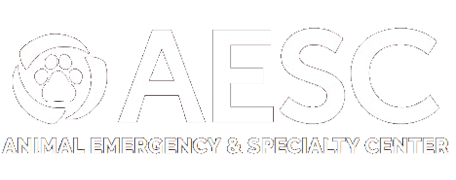The Common Modalities of Pet Rehabilitation
June 6, 2025 · Veterinary Services

Physical therapy for dogs? Yes!
With quality modern veterinary care, pets are now living longer than ever. Pet rehabilitation - like physical therapy for humans - can be instrumental in helping our pets enjoy a higher quality of life, keeping them pain-free and active into their senior years. Whether your pet is coping with arthritis and chronic pain, recovering from injury or surgery, or navigating age-related changes, rehabilitation can play a vital role in your pet's veterinary care.
In this post, we’ll discuss key modalities of pet rehabilitation and how these treatments help pets heal and thrive!
Therapeutic Exercise
Exercises such as obstacle courses and targeted stretching focus on controlled, low-impact movement that gradually restores function without overexertion.
Our Certified Canine Rehabilitation Therapists (CCRTs) customize in-clinic and at-home exercise programs tailored to each pet's needs. This cornerstone of rehabilitation is designed to:
Improve balance and coordination
Increase flexibility and range of motion
Reduce compensatory movement patterns
Rebuild muscle strength
Hydrotherapy
Hydrotherapy uses the buoyancy and resistance of water to help pets exercise without placing excessive stress on their joints. Our underwater treadmill for pets provides a safe, controlled environment for healing and building strength. Water-based exercises are especially effective for:
Recovery from orthopedic surgery, such as TPLO or FHO
Controlled return to activity after soft tissue injury
Maintaining senior pet mobility
Recovery from spinal cord injury
Managing chronic conditions like arthritis
Laser Therapy
Laser therapy, or photobiomodulation, uses specific wavelengths of light to stimulate cellular activity and promote healing. It’s a non-invasive treatment that can:
Reduce inflammation
Relieve pain
Accelerate tissue repair
Laser therapy is commonly used for arthritis, soft tissue injuries, and even wounds.
Electrical stimulation (E-stim and TENS)
Electrical stimulation (E-stim) and transcutaneous electrical nerve stimulation (TENS) use low electrical currents to stimulate muscles or nerves. These treatments are designed to:
Reduce pain and swelling
Build strength by stimulating atrophied muscles
Promote healing by enhancing blood flow to targeted areas
We often use e-stim therapy for pets after orthopedic surgery and TENS for pets experiencing neurologic conditions. By carefully calibrating settings for safety and comfort, our CCRTs tailor treatments to each pet’s tolerance and condition.
Massage and Manual Therapy
Our physical rehabilitation team may use techniques like myofascial release, joint mobilization, and stretching to support healing and provide a natural source of pain relief for pets.
Hands-on techniques can be deeply beneficial for pets, helping to:
Enhance flexibility and range of motion
Relieve muscle tension
Improve circulation
Promote lymphatic drainage

Francis demonstrates stretch therapy.
Acupuncture
Acupuncture involves inserting very fine needles into specific points on the body to:
Stimulate nerve function
Relieve pain
Improve circulation
Acupuncture can be particularly effective for pets with arthritis, chronic pain, or neurologic issues such as intervertebral disc disease (IVDD) and Wobbler’s syndrome. Most pets tolerate acupuncture surprisingly well—some even find it relaxing!
Assistive Devices and Orthotics
Pet rehabilitation may also include tools to support mobility or healing, such as:
Slings and harnesses
Wheelchairs or carts
Custom braces, orthotics, and prosthetics
Assistive devices are often part of a broader rehabilitation plan aimed at helping pets regain their mobility and independence. For pets with conditions like degenerative myelopathy (DM) or other causes of weakness or paralysis, a custom wheelchair can be invaluable. Braces and orthotic devices can provide support for pets recovering from surgery, like Achilles tendon repair, or can even provide long-term stability for some conditions when surgery is not an option.
Conclusion
Pet rehabilitation provides a compassionate, science-backed approach to helping animals live fuller, more comfortable lives. By combining various modalities under the guidance of Certified Canine Rehabilitation Therapists, we tailor treatments to each pet's unique needs and give them the best recovery possible.
If your pet is facing mobility issues, chronic pain, or post-operative recovery, consider scheduling a physical rehabilitation consultation. Healing isn’t just for humans—and our pets deserve the same dedication to their well-being.
